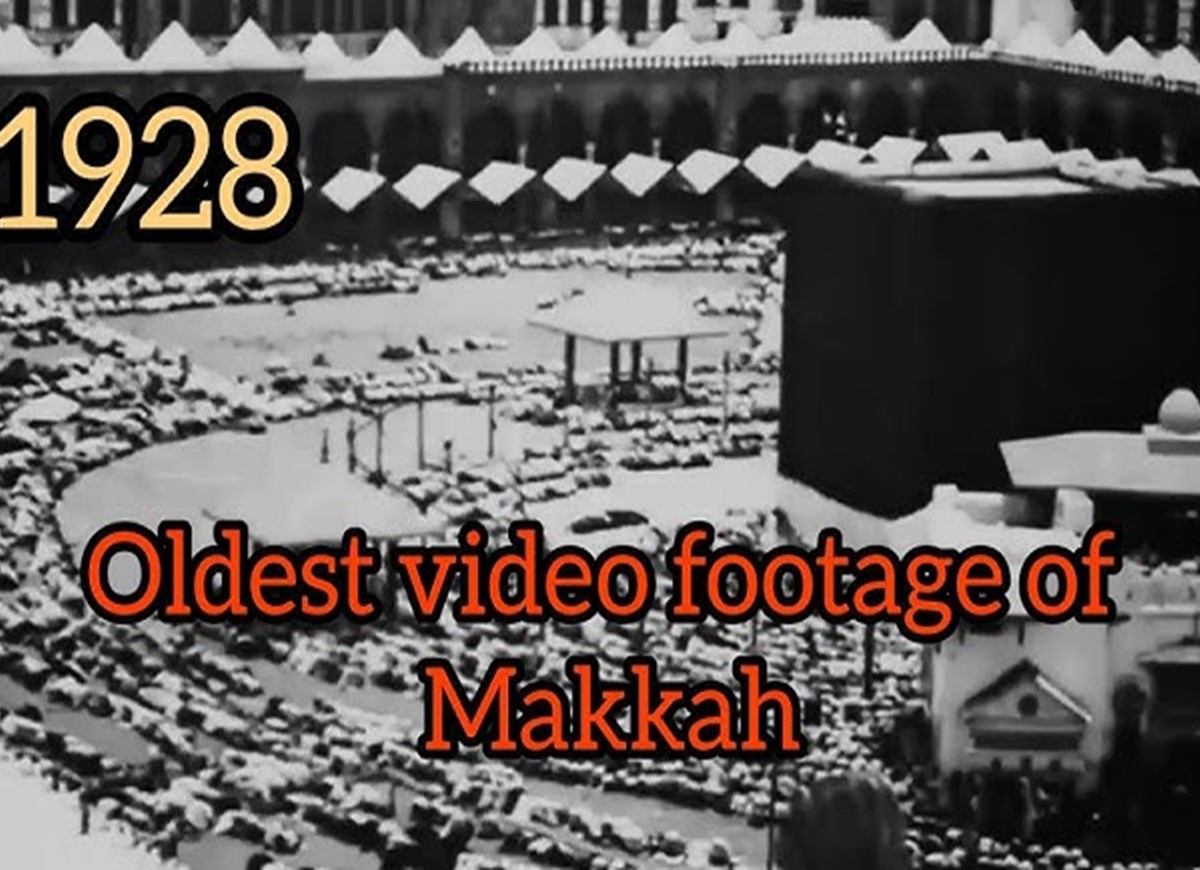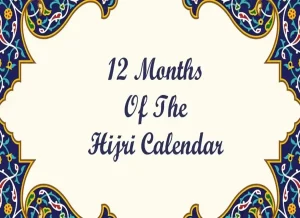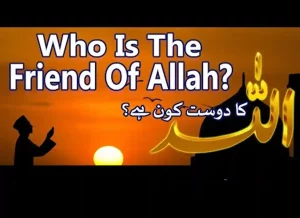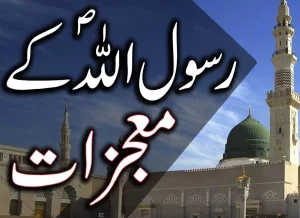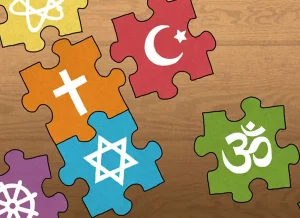Makkah – Few Jews are aware that for more than a millennium, the First and Second Temples in Jerusalem—Bait the Muqaddas, or Beit HaMiqdash—were contaminated by idols when the Ka’ba of Makka, built during Abraham’s and Ishmael’s time, was destroyed.
During this time, the Jewish holiday known as Hag Sukkot was observed as part of the Hajj, the pilgrimage festival. During the time of the Bible, the Hebrew word Hag was known as Hajj. Hajj literally translates as “to set out on a journey to a destination.”
The Islamic Hajj is thought to last five days, and Eid al-Adha, a three-day celebration, comes after. Shemeene Atzeret is a single-day celebration that comes after the seven-day Jewish Hag. Consequently, both are eight-day celebrations that are divided into two unique phases: an individual pilgrimage site celebration and a global celebration.
“Celebrate Hajj (Makkah) Sukkot for seven days after having harvested the fruits of your winepress and threshing floors,” the Torah says. Have a joyful celebration, you and your sons and daughters, your male and female servants, the Levites, the immigrants, the fatherless, and the widows in your communities.
You shall celebrate this festival to your Lord, your God, for seven days, at the location that the Lord shall determine. Your God is the Lord God, and alone your God. He will be the source of blessings you require for the duration of your harvest, helping you to be fully happy in all that you do. Every year, your people are required to be present three times in front of your Lord God at his appointed times: during the Hajj of Matzah, the Hajj of Weeks, and of course, the Hajj on Sukkot. (Leviticus 16:13–16)
The Prophet Solomon designated Sukkot, and the Hajj from Sukkot, for the dedication of the First Temple in Jerusalem. (1 Kings 8 2). Over the centuries that Solomon’s Temple remained, Hajj Sukkot has been so important that it was often referred to as “simply “the Hajj” (1 Kings 8:3; 8:65; 12:62; 2 Chronicles 5:3; 7:8)
It was customary to circle around the Temple alter while singing the psalms during the first six days of Sukkot, maybe because of the large number of Jews who traveled to Jerusalem to pray in the Temple. It was customary to go around the temple alter seven times on the seventh day of Sukkot. The Oral Torah states: “It was customary to perform a circle around the altar every day of Sukkot as well as seven times on Sukkot’s seventh day.” (4:5) in Mishnah Sukkah.
At the end of all ceremonial reenactments, the slaughtering rite of a Qurbani (Korban in Hebrew) Halal/Kosher animal teaches everyone that: “Their flesh and their blood will not be able to touch Allah.” But your love is a gift to Him anyway.” (Quran 22:37). The Hebrew prophets and the Rabbis who offered sacrifices at Solomon’s Temple had the same knowledge.
For this reason, at one point, the supporters of Prophet Muhammad questioned him, saying, “O Prophet of Allah! This Qurbani, what is it?” He said, “It is the Sunnah of your father Ibrahim.”
When conducting their different Haj ceremonies, Muslims and Jews must adhere to the following six rules:
Muslims It is only necessary for those who are able to travel to Mecca to do so.
The only Jews required to visit the Jerusalem Temple were those who could physically get there.
Before performing the Hajj, Muslims are advised to cleanse their bodies by drinking water.
Jews Before facing Hag, wash your body with water.
Muslims for Muslims: Turn around inside the Kaaba. Clockwise or counterclockwise seven times (Tawaf)
Jews: Go around the Temple seven times in a clockwise manner.
Muslims are obligated to make a sacrifice at the Hajj; specifically, they must present an animal in a Qurban (offering).
On the Haggapuri holiday, Jews were obligated to offer specific animals, and participants were compelled to donate specific animals in exchange for a corban (offering).
Muslims It is not advisable for a lady who is menstruating to circle the Kaaba.
Jews Women who are menstruating should avoid visiting the Temple Alter Muslims. It would be preferable if they entered the al-Haram complex barefoot.
It is recommended that Jews enter the Temple compound barefoot.
In the Jerusalem Temple, rituals were performed in honor of a prophet on the seventh day. David, Aaron, Moses, Jacob, Joseph, and Abraham. Muslims are able to discern both many differences and some commonalities between the Islamic and Judaic hajjs.
The theological significance of the week-long harvest festival was progressively losing its hold on Jewish people’s spiritual consciousness when the Romans destroyed the Second Temple in 70 CE. Most of the thousands of Jews from all over the Land of Israel who travel outside of Jerusalem each year to celebrate Sukkot during the week of Bait ul-Muqaddas, the furthest sanctuary, and the majority of the tens of hundreds of Jews from other countries outside of Israel’s Land of Israel. Their visits ceased.
Then, two generations later, there was yet another significant Jewish uprising in Israel (132-135 CE). All Jews were forbidden from visiting the location of the demolished Jerusalem Temple, known as Beit ul Muqaddas/Beit haMi, because the Romans constructed Jerusalem in the shape of a pagan town filled with idols.
Most Jews who reside outside of Israel do so in Protestant countries where religious pilgrimages play a minor or nonexistent part in daily life. Because of this, it is exceedingly difficult for the majority of Jews to experience the tremendous spiritual uplift that is common to extremely holy and hallowed sites and to those who walk the long journey there.
A small number of non-pilgrims are able to share in the spiritual experience to the same extent as those who follow the pilgrimage tradition. One of them, Mark Twain, wrote: “It is amazing to see the strength of faith that enables countless numbers of old, fragile, young, and weak people to set out on such epic journeys without hesitation or complaint and endure the trials without moaning. Regarding Muslims Jerusalem is the Farthest Sanctuary for Muslims. Glory to Him who, during the night, transported His servant from the Holy Sanctuary of Jerusalem to the Holy Sanctuary’s Furthest Sanctuary and its Precincts, which We blessed, so that He would receive some of our Signs. We are unquestionably the One-Hearing, All-Seeing. (Qur’an 17:1)
It is significant to remember that Prophet Muhammad’s ascent—known as miraj—to the skies occurred in the area where the remnants of the Jerusalem Temple had stood. The holy sites in Jerusalem and Makkah work together like a breathing air cylinder to restore the One God’s spiritual purity everywhere.
The earliest was the Ka’ba, which was constructed during Abraham and Ishmael’s time.
Centuries later, the introduction of the idol caused it to be degraded. One tribe in Arabia rejected the teachings of Prophet Ibrahim wholeheartedly. The House was totally desecrated by heathens, despite the fact that Abraham and Ishmael had purified it to serve Allah alone. The Arabs who practiced pagan religion severely corrupted the customs that Ibrahim created there. For nearly a millennium, Arabia was in this depressing state.
Makkah – After Hajar and her son Ishmail moved to the area around the Zamzam well, the Jurhum tribe members migrated in closer proximity to the water source. Ishmail, who was married to a member of the Jurhum tribe, helped his father build the Kaaba and remained its caretaker until his passing. The Jurhumites maintained their position as the guardians of the Kaaba for a few centuries, but they soon started introducing idols of other tribes, abdicating their responsibility to defend the Kaaba.
Other tribes revolted as a result, driving the Jurhumites from their land. Out of Jurhumites. The Jurhumites removed the Ka’ba in return, burying their well in Zamzam. The well known as Zamzam was not found until the Prophet’s grandfather, who was awakened by a vision of its origin.
But precisely 500 years after the Romans demolished the Second Temple in 70 CE, it was appropriate to make the request that Ibrahim, the Prophet, be heard in his prayer: “Our Lord! Provide them a companion of their own who will recite your Aayaat (verses) to them, instruct them in the Book and Wisdom, and consecrate them.” (Qur’an 2:129) and the birth of Prophet Muhammad.
Solomonic Temple The Babylonians had ruined Solomon’s temple. The Romans rebuilt it, destroyed it, and then infested the entire area by building a Roman city that included streets and buildings full of idols.
The destruction of the furthest sanctuary of the monotheistic religious pilgrimage to Jerusalem by the pagan Romans was surpassed approximately 500 years later by the ascension of Prophet Muhammad, also known as miraj mirajup to the heavens, and the impending destruction of over 300 idols worshipped in the Pagan Ka’ba in Makkah. After the Ka’ba was cleaned once more, the construction of a Third Temple in Jerusalem was deemed unnecessary. Since then, the town has been significant to both Jews and Christians, even in the absence of the temple and animal sacrifices, for almost fifty years.
Zechariah foresaw a time when God would work with humanity to bring about justice and peace on a global scale. To honor God, people will travel to Makkah or Jerusalem from all around the world.
Jerusalem welcomes Jews, Christians, Muslims, and everyone else throughout the month of Hajj Sukkot each year, including people whose ancestors were once Israel’s enemies. “Then the survivors of all the nations who have attacked Jerusalem will gather every year to honor the King and the Lord Almighty and to commemorate Hajj Sukkot.” (Zechariah 14:16)
According to representatives of the Israel Ministry of Tourism, a record 4 million tourists visited Israel in 2018 and spent $5.8 billion, with 77.5 percent of those who came to Jerusalem: There were 2.4 percent Muslims, 27.5% Jews, and 54.9% Christians.
The Ka’ba will remain accessible to all Muslims who fulfill this requirement: “Inspire individuals to perform the Hajj. They will come to you from all over the desert, either in their soles or on whatever sort of camel. (Qur’an 22:27).
God will enable the prophet Isaiah’s prophesies to come to pass in the coming years, as follows: “There will be a road from Egypt up to Assyria in that day.” Both the Egyptians and the Assyrians are traveling to and from Assyria. The third will be Assyria. Together, Assyrians and Egyptians will be participating in worship. Israel will be a blessing for the planet and rank third on that day, behind Egypt and Assyria. God Almighty will provide them a blessing by declaring, “God bless Egypt, my beloved people.” Israel is my inheritance, and Assyria my labor.” (Isaiah 19:23–25)
Thank you, God, that it will occur soon.
The website for Rabbi Maller is rabbimaller.com. 31 essays on Jewish-Muslim relations written by Rabbi Maller that were first published on Islamic websites and have now been published as a book. The book is called “Judaism as well as Islam as synergistic Monotheisms” and it costs $15 on Amazon.com.
Click Here To Find out :
- The Story of The Qur’an
- Textual Criticism and Qur’an Manuscripts
- Quran French, The Quran: English Translation
- Quran Read Pen with Multi Language translation
- Online Quran Teacher For Kids & Color Coded Quran
- Tracing Quran (1-30) , The Noble Quran (Vol 1-Vol 30)
- The Clear Quran, El Coran & The Essential Book of Quranic Words
- In The Shade of The Qur’an Vol.01 – 18 (Juz’ ‘Amma) by Sayyid Qutb
Categories: PRAYER (Salat), ALMS (Zakat), SAWN (Fasting) HAJJ (Pilgrimage) & DUA (Supplications), Hadith and Tafseer, The Holy Quran, Quran Jaz 1- 114
Topics: Ushr and Zakat, Hijab, Arabic Corner, Faith, Islamic History, Biography, Sirat ul Nabi PBUH, Islamic Studies, Halal & Haram


